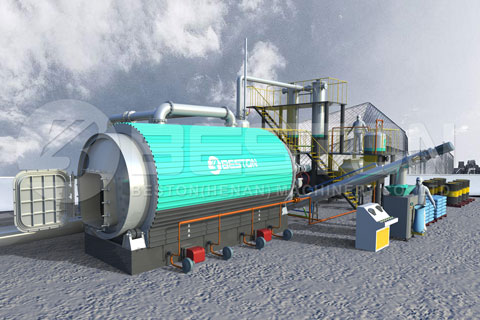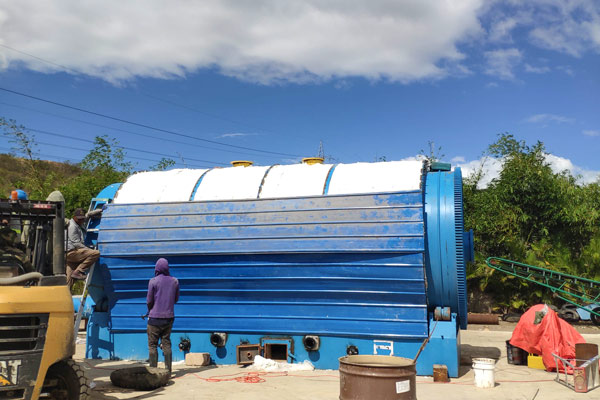In the midst of a rapidly evolving industrial landscape, the role of pyrolysis and cracking technologies is garnering increased attention. These processes, which involve the breakdown of complex compounds into simpler forms through the application of heat, hold significant promise in fostering industrial transformation.
The Basics of Pyrolysis and Cracking
1. Pyrolysis
Pyrolysis is a thermal decomposition process in which organic materials are subjected to high temperatures in the absence of oxygen. This results in the breakdown of these materials into valuable products such as biochar, bio-oil, and syngas. Pyrolysis plant can be applied to a wide range of feedstocks, including biomass, plastics, and waste, making it a versatile tool for resource recovery and waste management.
2. Cracking
Cracking, on the other hand, is a process that primarily deals with hydrocarbons such as crude oil and natural gas. It involves breaking down large hydrocarbon molecules into smaller, more valuable ones. This process is central to the production of various petrochemicals, including gasoline, diesel, and plastics.

Cost-efficient Beston Waste Tyre Pyrolysis Plant
The Role of Pyrolysis and Cracking in Industrial Transformation
1. Resource Efficiency
One of the key contributions of pyrolysis and cracking technologies to industrial transformation is resource efficiency. Pyrolysis allows for the conversion of waste materials into valuable resources, reducing the need for virgin resources. This aligns with the principles of a circular economy, where resources are conserved and reused in a closed-loop system.
2. Waste Management and Pollution Reduction
Tire/Plastic pyrolysis plant plays a critical role in waste management by diverting organic and plastic waste from landfills and incinerators. This not only reduces the environmental burden of waste disposal but also minimizes harmful emissions associated with these processes, contributing to improved air quality.
3. Sustainable Energy Production
Both pyrolysis and cracking can contribute to sustainable energy production. Pyrolysis of biomass can produce biofuels and bioenergy, reducing the reliance on fossil fuels. Cracking of hydrocarbons produces valuable fuels and feedstocks for various industries, supporting the transition to cleaner energy sources.
4. Petrochemical Industry Advancements
Cracking technologies are instrumental in the petrochemical industry’s advancement. They enable the production of a wide range of essential products, including plastics, synthetic rubber, and various chemicals. As the demand for these products continues to grow, cracking technologies are evolving to meet the industry’s sustainability goals, such as reducing emissions and energy consumption.

Plastic Pyrolysis Plant Installed in Doninica
Innovations in Pyrolysis and Cracking Technologies
To maximize their potential in industrial transformation, pyrolysis and cracking technologies are undergoing continuous innovations.
1. Catalytic Pyrolysis
Catalytic pyrolysis involves the use of catalysts to enhance the efficiency and selectivity of the plastic/tyre pyrolysis plant. Catalysts like zeolites and metal oxides can significantly improve product yields and the quality of bio-oil and syngas.
2. Advanced Reactor Designs
Innovations in reactor design have led to improved efficiency and scalability of pyrolysis and cracking processes. Fluidized bed reactors, rotary kilns, and microreactors are some examples of advanced designs that optimize temperature control and reaction kinetics.
3. Integration with Renewable Resources
The integration of pyrolysis and cracking technologies with renewable resources, such as biomass and algae, is a promising development. These technologies can play a pivotal role in the production of sustainable biofuels and bioproducts.
More information in Beston Group.